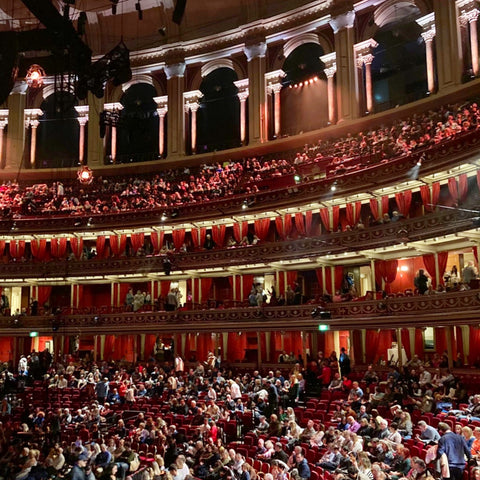
In 1851, Queen Victoria's husband, Prince Albert, organized a Great Exhibition in Hyde Park, which was a tremendous success. This Great Exhibition of the Works of Industry of All Nations featured 14,000 exhibitors and welcomed six million visitors. Queen Victoria visited 37 times. The fair's purpose was to elevate and promote science, industry and technology. It was modeled on previous French exhibitions which had focused on French trade. This fair, however, broadened the exhibitors' list to companies and organizations from around the world—making this show a model for future World's Fairs.
Prince Albert, a driving force in embracing technology and social improvement, proposed building a permanent venue, a flexible space for exhibitions, entertainment and public education on the edge of Hyde Park. It was to be called the Central Hall of Arts & Sciences, the featured structure of a larger, multi-building complex. Alas, Albert died in 1861, before he could see the project completed, although his death helped quicken the pace, move the project forward. When the widowed Queen Victoria laid the cornerstone for the Hall in 1867, she re-named it Royal Albert Hall of Arts & Sciences.
The Hall was opened on 29 March 1871. The Queen found herself too overwhelmed to speak publicly so her son, Edward, Prince of Wales (who would become King Edward VII thirty years later), welcomed the 7,000 assembled and declared his father's dream realized.
A special choir was assembled to perform at the opening. The Hall's first concert, on May Day 1871, was Arthur Sullivan's cantata On Shore & Sea. From the start, it was apparent that the Halls's acoustics were terrible. One smart alec commented that the Royal Albert Hall "was the only place where a British composer could be sure he would hear his work twice." Since then, the glass and iron dome has been baffled with a range of different materials. Today, what appears to be upside-down umbrellas hang from the ceiling.

The building is constructed of of six million Fareham red bricks and cast-terracotta elements, in a form inspired by ancient colosseums. The original plan was for a space which would seat 30,000 audience members. Eventually this was scaled-down to 7,000 seats. In future renovations, the number was further reduced to 5,272 seats (for reasons of safety and comfort). The Hall was originally illuminated with gas. It was electrified in 1888.

Rowland Mason Ordish designed the massive iron and glass dome. It was built in Manchester—and assembled there for a safety trial before it was disassembled and transported to London, piece-by-piece, by horse cart. Once the dome had been installed, volunteers were recruited to remove the wooden support structure holding-up the dome. Everyone else cleared the site—for fear that the tonnage might collapse. When the supports were removed, the dome did drop: 5/16 of an inch.

I had long wanted to visit Royal Albert Hall—having seen it so many times on PBS concert recordings. On this trip a friend, who is a trustee of the Royal Albert Hall, gave us his seats for a performance of Cirque du Soleil's Alegria. Cirque has mounted a show at the Royal Albert Hall nearly every year since 1996. The performance was mesmerizing! The seats were fabulous! And the event, was one of the best theatrical experiences I have enjoyed in a long time. Several times during the evening I had to wipe my eyes. The astounding magic and beauty of the performance, plus the wonderment of the venue, brought tears to my eyes.
Though our Greenwich Village store is now permanently closed, LEO Design is still alive and well! Please visit our on-line store where we continue to sell Handsome Gifts (www.LEOdesignNYC.com).
We also can be found in Canonsburg, Pennsylvania, at The Antique Center of Strabane (www.antiquecenterofstrabane.com).
Or call to arrange to visit our Pittsburgh showroom (by private appointment only). 917-446-4248

